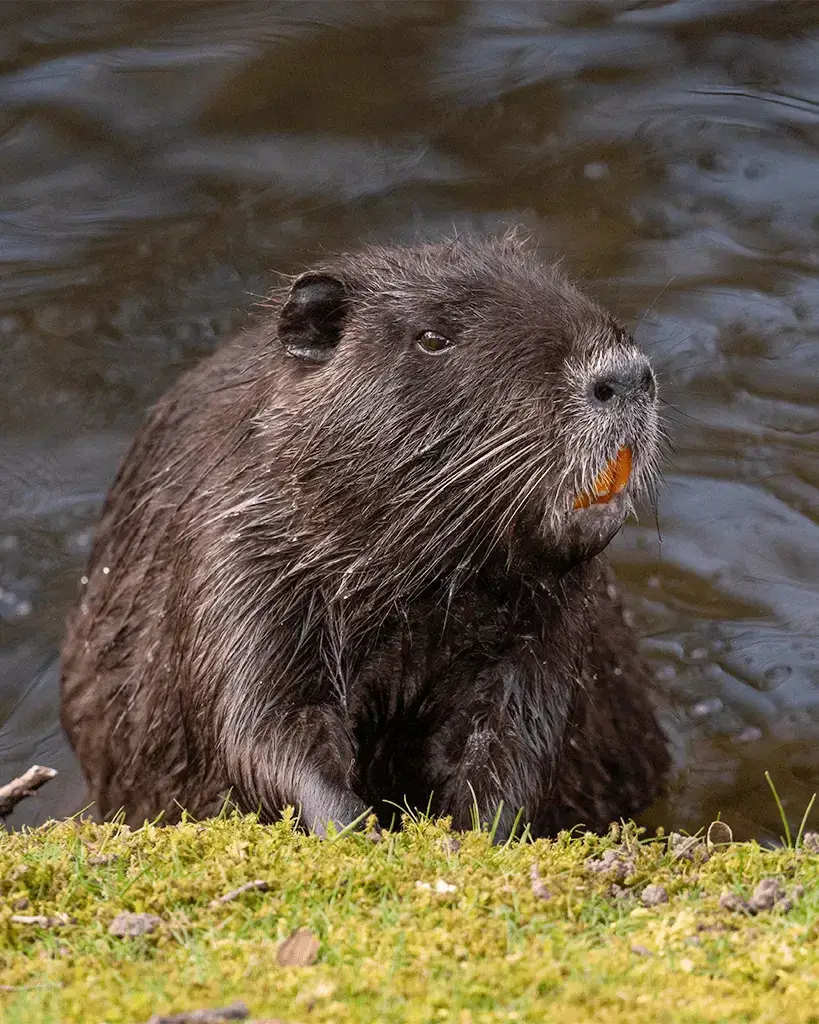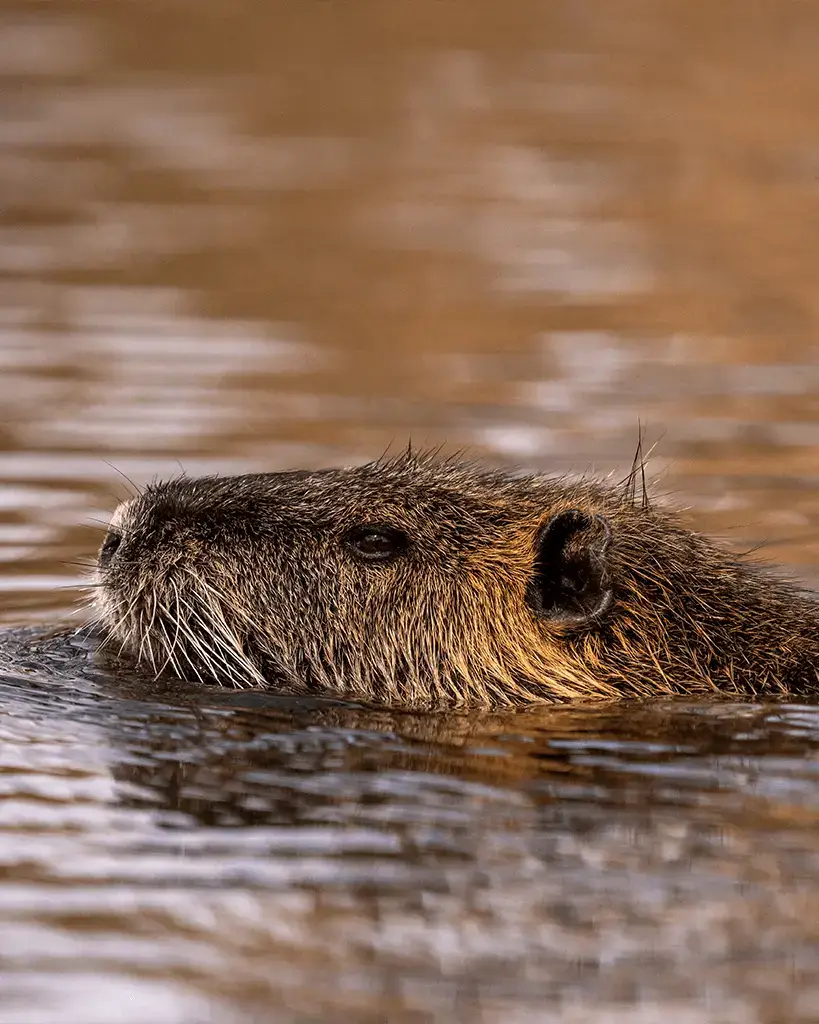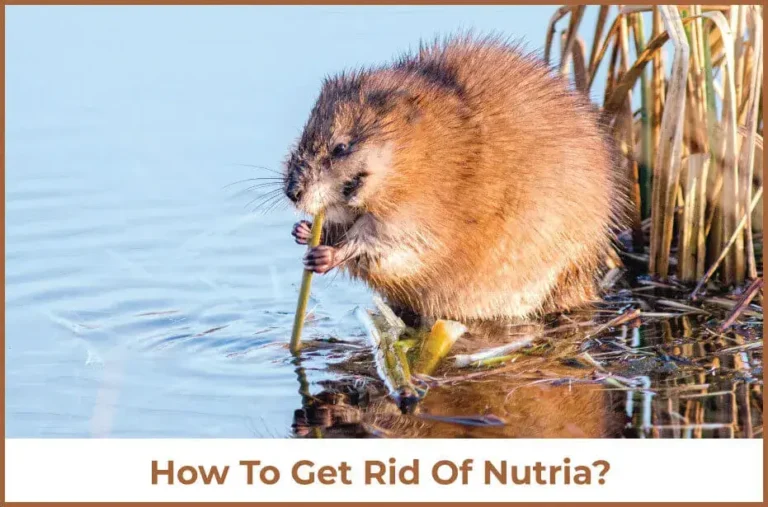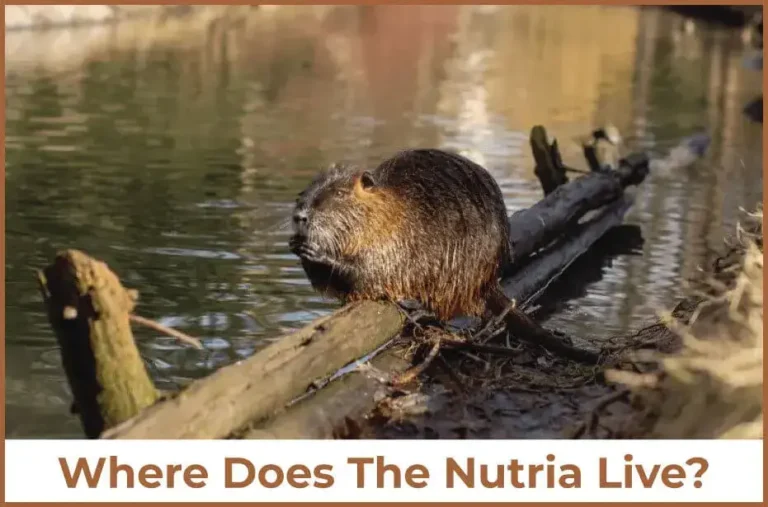Dive Into The World Of Nutria: Invasive Or Harmless
Explore the world of nutria and learn everything about these large, partially aquatic, and webbed-foot swamp rats. Scientifically known as Mycastor Coypus, live in burrows and have sturdy bodies. These rodents are adaptable to any environment and are commonly known as swamp rats, beavers, nutria rats, or aquatic rats.


Introducing Myocastor Coypus
Nutria are called water rats because of their semi-aquatic nature. They are adaptable rodents that can thrive in challenging environments. Because they are partially aquatic, therefore live in tunnels or burrows that are near to water sources. These amphibious rodents are more active in water than on land. They are large, fur-bearing, and dark brown water rodents that show a resemblance to beavers.
Feeding: They are prolific eaters and have herbivorous eating habits. They also eat freshwater mussels and insects. Mainly their feeding items include leaves, roots, stems, bark, and aquatic vegetation.
Behavior: Nutria are active rodents capable of surviving for a longer time in their wild habitat. Thanks to their crepuscular behavior that allows them to alert other mates of their group.
Habitat: Marshes, lakes, freshwater ponds, and rivers are the natural habitat of these rodents. They can’t live without water and it has been observed that they build their burrows near the source of water.
Appearance Of Nutria
Nutria are rodents that can live both on land and in water. Their unique appearance and fur quality have made them a center of attraction among pet enthusiasts.
- They have orange teeth and smaller ears/eyes that are located on top of their head.
- They have large and triangular heads along with the arched body.
- Their legs are short, and they have large webbed hind feet that are almost 6 inches in length.
- Their fur is soft, dense, and thick. Its color varies from reddish brown to brown-grey.
- The body length of these rodents is almost 2 feet including the tail.
- The average weight of these adults varies between 4-9 kg.
Why Nutria Makes Amazing Pets?
Ever wondered about including a nutria in your family? It may sound a bit unconventional, but trust me, those little coypu have a manner of stealing your coronary heart. Imagine coming home to a hairy pal who is always excited to see you, with their smooth fur and lovable little faces.
If you’re curious about gaining extra knowledge, you’re in the right location! We are here to guide you through the whole lot associated with your rodent pet. Whether you want to keep them as pets or just want to get information about them, we have provided complete information about these rodents. From care tips to fun facts and everything in between.
Nutria And Their Fur Demand
Nutria fur had great demand because of its glossy and unique appearance. The locality of these rodents is South America. They were first brought to the United States in 1899 because of their fur demand in the fashion industry. The fur demand was at a boom in the fashion industry at that time. Fur trading companies produced a significant revenue by using the fur of these rodents. But gradually, the fur demand was reduced and it became difficult for breeders to upkeep them. They were then released in their non-native habitat. Surprisingly, they not only survived but also thrived in that habitat. At that time, people were unaware of the destruction caused by these rodents because of their prolific eating habits. They are now known as invasive species that have destroyed agriculture and vegetation.
Our Objective At Rodents Pets
Most people are curious whether nutria are being kept as pets or not. Because of the destruction these rodents have caused to wetlands and marshes, they are considered invasive species. Besides this, maintaining nutria as a pet is now legal in some regions of the world. We at nutria.rodentspets.com aim to provide comprehensive details about their feeding habitat, lifestyle, longevity, care, food, and behavior. We hope the information in our blogs will help you to keep them as pets. Let’s explore the wonderful world of Nutria together!
Drop us a message!
Articles

How To Get Rid Of Nutria?
How To Get Rid Of Nutria? Do you want to get rid of nutria from your hometown? Follow this guide to remove these overgrazing and

How Does Nutria Affect The Ecosystem?
Each species, whether a tiny microbe or a large predator, is essential in the complex biotic community. The ecosystem’s balance runs smoothly until a non-native

Where Does The Nutria Live?
Nutria, an amphibious and webbed-foot rodent, is native to South America. They can be found in the coastal states and lake marshes of the U.S.
